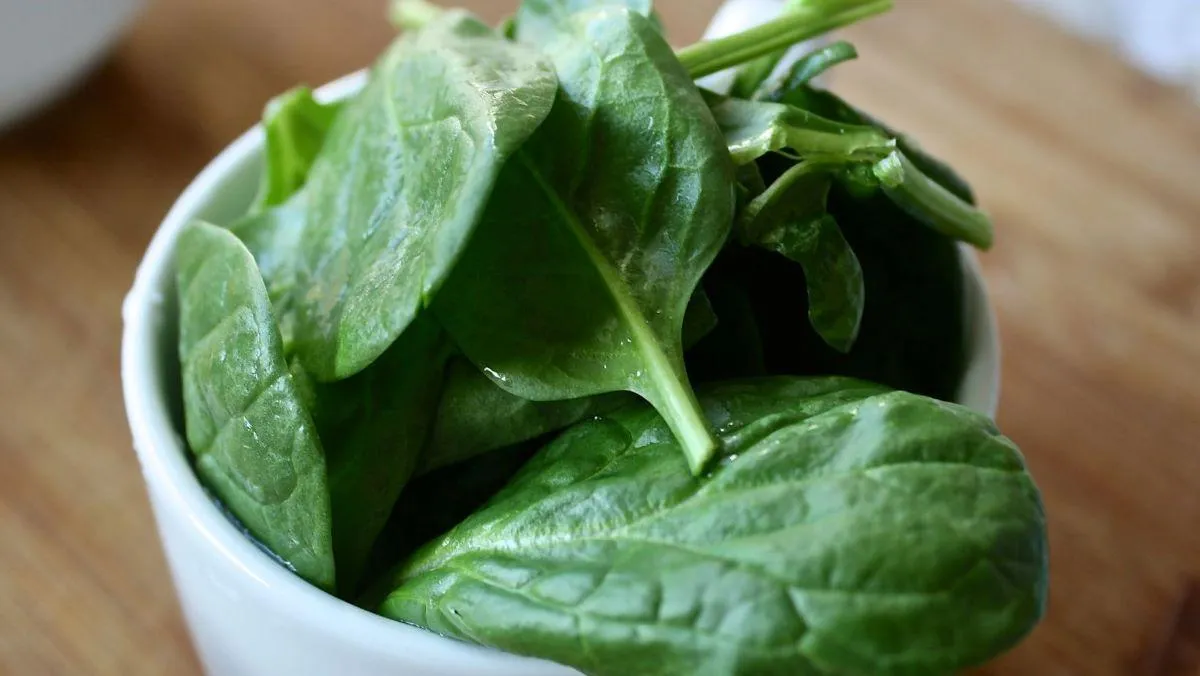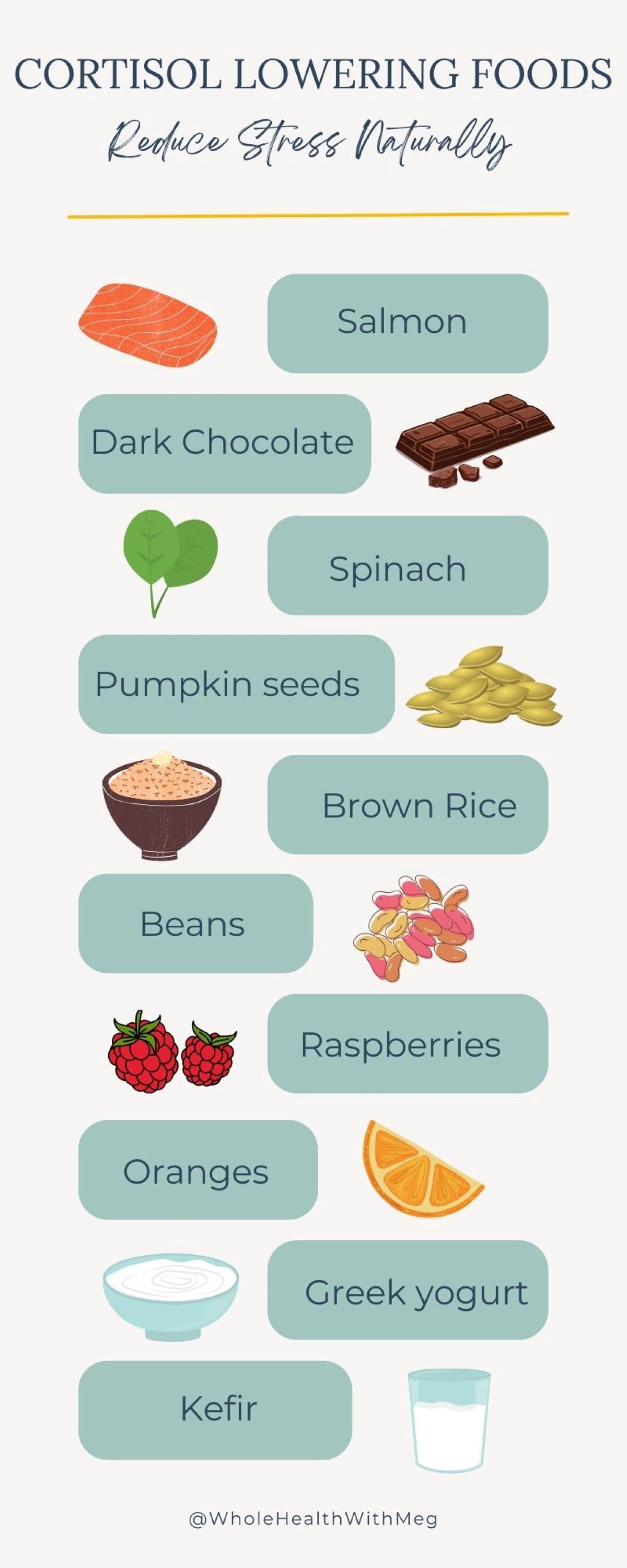
10 Cortisol Lowering Foods to Reduce Stress Naturally
Do you feel stressed? How often do you experience periods of chronic stress? What do you do to reduce your stress levels?
These are a few questions to ask yourself and reflect on since stress has become an inevitable part of life.
From our fast-paced society and demanding work schedules to personal commitments, you may find yourself putting stress management on the back burner.
Unfortunately, unmanaged stress can have negative effects on health such as impaired immune function, increased weight fluctuations, poorly controlled blood pressure and insulin resistance due to elevated cortisol levels.
But, have no fear. There is good news!
In this blog, you will explore 10 cortisol lowering foods and discover how to incorporate them into your daily routine. You will walk away with practical tips that will help you manage cortisol, stress and ultimately blood sugar levels.
Don’t wait any longer - dive into the blog and learn how to use food as a tool for stress management!
Understanding Cortisol
Cortisol is a hormone that is produced by the adrenal glands (located on the kidneys) and belongs to the class of hormones called glucocorticoids.
This essential hormone is most commonly known for its important role in regulating the body’s stress response. It is often referred to as the “stress hormone” because cortisol levels increase during times of physical or mental stress.
Cortisol has other functions within the body such as regulating sleep cycles, minimizing inflammation and controlling blood pressure. It also plays a significant role in regulating blood sugar levels.
It is important to know that low levels of cortisol are necessary for essential functions. It is when cortisol levels become elevated that damage to the body can occur.
Cortisol and Blood Sugars
Let’s talk specifically about the impact of high levels of cortisol on blood sugars.
When the brain perceives a potential threat or stressor, cortisol is released and triggers the liver to release stored glucose. These threats/stressors will look different for everyone but can be things like financial worries, health issues, unpredictable situations or work deadlines.
On the positive side, this provides an immediate energy boost so the body has what it needs to handle that threat or stressful situation.
But, on the flip side, if the brain continues to be put under stress, this can lead to chronically elevated cortisol levels.
For those with prediabetes or type 2 diabetes, the body is not able to utilize the excess glucose that is released by the liver. This can cause periods of hyperglycemia for acute stressors or elevated lab values such as hemoglobin A1c under chronic stress.
How Food Impacts Cortisol Levels
Food can have a direct impact on cortisol by either contributing to elevated levels or helping to reduce levels to a normal range.
Foods that increase cortisol levels include things like sugary beverages, highly processed foods, caffeine, alcohol and high sodium foods.
Nutrient-dense foods such as fruits, vegetables, complex carbohydrates, lean proteins and healthy fats can support optimal cortisol regulation.
Cortisol Lowering Foods
Emphasizing a diet that includes essential nutrients along with other stress management practices can be an effective strategy to promote resilience against chronic stress.
It has been shown that foods rich in magnesium, omega-3s, probiotics and antioxidants play a vital role in the body’s responses to stress.
Don’t only take my word for it! Let’s take a peek at the research to help understand the nutrients that help reduce cortisol.
Magnesium
Magnesium is an essential mineral that plays an important role in various processes within the body, including stress regulation.
There are various studies that have suggested a strong connection between magnesium consumption, stress and overall mental health. One specific study has proposed that magnesium is effective in treating depression in those with diabetes.
Omega-3
Omega-3s are polyunsaturated fats that play a vital role in maintaining heart health, brain function and reducing inflammation in the body.
One study looked into the possibility between omega-3 intakes and occupational burnout. The results suggest that daily consumption does have a positive influence on psychological and physiological markers of occupational burnout.
Probiotics
Gut health has been a popular topic, especially over the last few years. Probiotics are live (beneficial) bacteria that support gut health and aid in digestion.
In a study looking at the impact of probiotic consumption and older adults, it showed evidence that probiotics alleviate stress in older adults, along with cause changes in the gut microbiota.
Antioxidants
Antioxidants help to protect our cells from stress along with reducing inflammation, supporting the immune system and promoting heart health.
Research studies continuously show the Beneficial Effects of Citrus Flavonoids on Cardiovascular and Metabolic Health.

The Best Foods to Lower Cortisol
While more research is needed to understand the complex relationship between nutrients, stress and cortisol, it is promising to know that maintaining a balanced diet can be an approach for stress management.
Below you will find 10 foods that contain a single or multiple of the science backed nutrients with easy ways to incorporate them into your diet.
Salmon
Salmon is known for its high content of omega-3 fatty acids. Specifically, salmon is abundant in two types of omega-3s: eicosapentaenoic acid (EPA) and docosahexaenoic acid (DHA).
Aim to regularly incorporate into meals at least 1-2 days per week.
Dark chocolate
Dark chocolate is not only delicious and one of my favorite treats but it also offers health benefits due to its rich magnesium content and antioxidant properties. The significant amount of antioxidants such as flavonoids and polyphenols help combat stress and inflammation in the body.
Opt for dark chocolate with a higher cocoa content (70% or higher) to maximize the benefits.
Spinach
Leafy greens are nutritional powerhouses providing many vitamins and minerals, including magnesium! From spinach to kale, Swiss chard and collard greens, these can help ensure sufficient magnesium intake.
Try adding a handful of leafy greens into a smoothie at breakfast or top with your favorite salad toppings and plant-based proteins for a nutrient rich lunch.
Seeds
Pumpkin, chia, flax and hemp seeds are all excellent sources of Omega-3 fatty acids.
Seeds can be added to breakfast as a Greek yogurt topping, at lunch sprinkled on a salad or in the evening tossed in a stir fry for an added nutritional boost.
Brown Rice and Beans
Similar to spinach, brown rice and beans are sources of magnesium. Incorporating these foods into your meals can help achieve adequate magnesium intake. Especially on the days when you aren’t feeling like eating leafy greens!
Cooked brown rice and beans can be sauteed with vegetables such as squash, bell peppers, mushrooms and onions to create a nutrient rich grain bowl. Drizzle with my homemade ranch and you’ll have an irresistible meal!
Berries and citrus
Berries and citrus fruits such as raspberries, blueberries, strawberries, oranges and grapefruit are vibrant fruits that pack a powerful punch of antioxidants.
Include an assortment of these fruits in your diet to satisfy a sweet craving and to boost the color of a recipe.
Greek yogurt and Kefir
Greek yogurt and kefir are two popular dairy products that are known for their probiotic content.
These two foods can be served at breakfast, lunch or dinner either plain or incorporated into a recipe.
Practical Tips for Incorporating Cortisol Reducing Foods
Meal Plan
Setting time aside each week to plan meals is one way to successfully incorporate nutrient-rich foods into your routine.
It also allows you to identify which staples like berries, leafy greens and dark chocolate need to be stocked in your home. Keep these kitchen essentials so they are readily available for meals and snacks throughout the week.
Be Consistent
Make it a goal to add at least one cortisol lowering food to breakfast, lunch and dinner. This will allow you to start the day off right and round out the evening with essential nutrients.
One Swap at a Time
I am sharing a ton of information with you today and the key to soaking it all up and putting it into practice is making one change at a time. For example, if you are currently eating a nutrient poor snack then swap with a handful of nuts paired with berries.
Have Fun
It can be a blast adding new recipes to the routine! You can experiment with different flavors and ingredients to create simple or complex recipes based on your preferences.
Here are a few suggestions to consider giving a try:
Blood Sugars Made Simple
Let’s hop back to those questions from the beginning - Do you feel stressed? How often do you experience periods of chronic stress? What do you do to reduce your stress levels?
Continue to keep these questions at the top of mind and regularly check-in with yourself to ensure stress levels are managed.
The education, cortisol lowering foods and expert tips provided in this blog can be used as solutions to support your well-being moving forward.
Feeling like you need additional support? That is totally understandable! It takes time to create an awareness of your stress triggers and develop a personalized plan to combat stress and reduce cortisol levels.
That is why I have developed my Sugar Savvy Group Coaching Program! It is an 8-week virtual program that helps you build and strengthen a solid foundation. The sense of community will encourage and empower you to stay on your health-conscious path. Apply now!